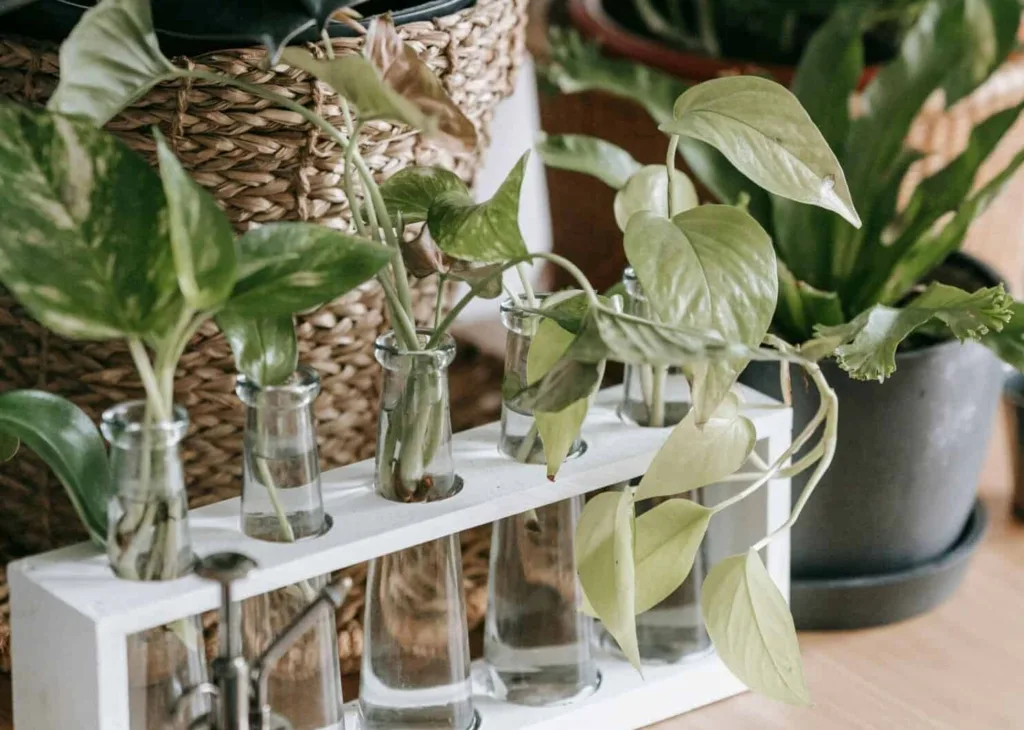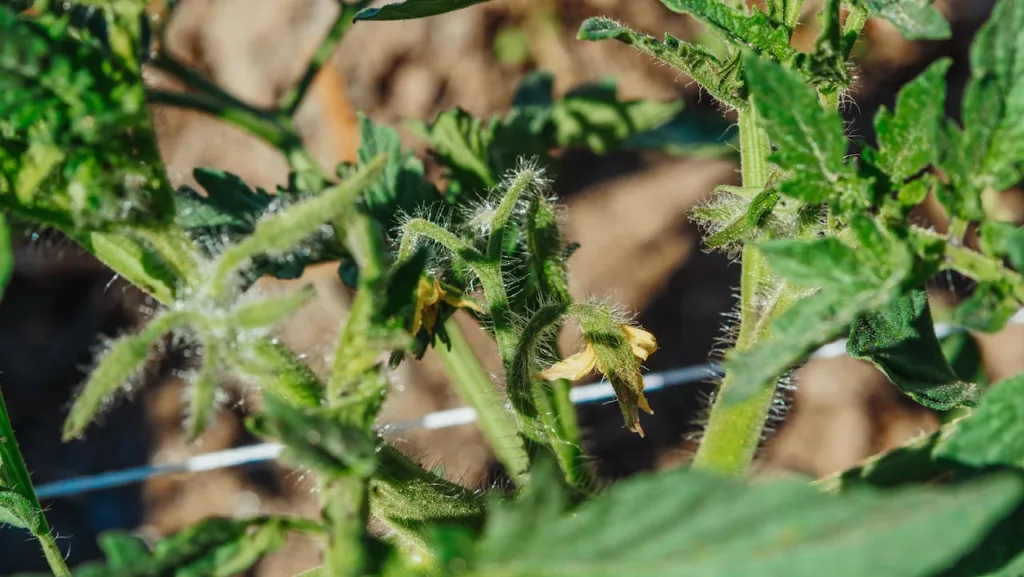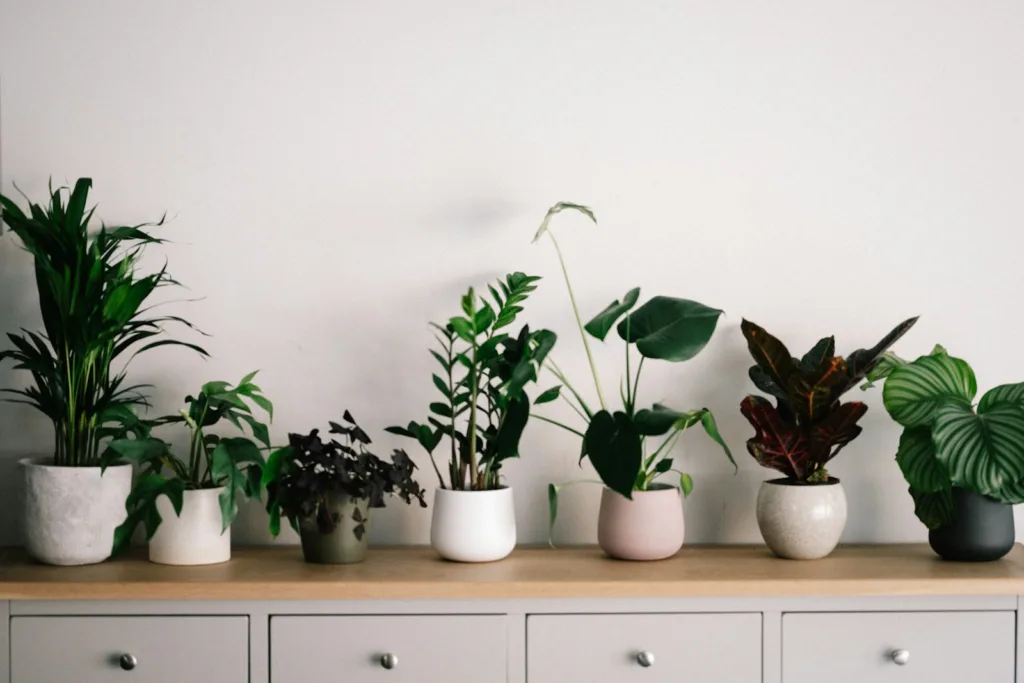Peace lilies (Spathiphyllum) are popular houseplants, but did you know they can also thrive outdoors? While they are typically grown indoors, in the right conditions, these tropical beauties can flourish in gardens, patios, and shaded outdoor spaces.
Growing a peace lily outdoors requires careful attention to climate, light, soil, and watering. Unlike indoor plants, outdoor peace lilies face natural elements such as fluctuating temperatures, rain, and pests. However, with the right care, they can grow larger, produce more blooms, and enhance the beauty of your outdoor space.
In this guide, you’ll learn everything about peace lily outdoor care, from choosing the right location and soil preparation to seasonal care and troubleshooting common problems. Whether you’re growing them in pots or directly in the ground, this step-by-step guide will ensure your peace lily thrives.
All you need to know for growing peace lilies outdoor –
Can you grow peace lily outdoors ?
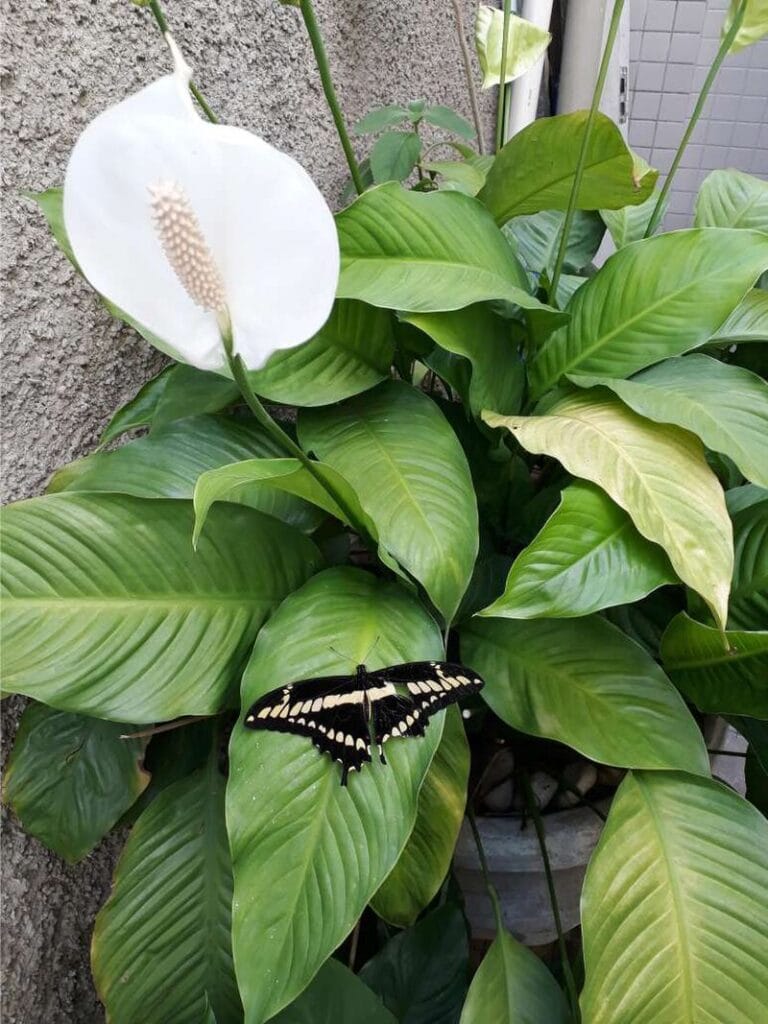
The simple answer is yes they can . But it needs some special care ☘️ which I will discuss in this article. Peace lilies originate from the tropical rainforests of Central and South America, where they grow under tree canopies in warm, humid environments. This makes them suitable for outdoor cultivation in USDA Hardiness Zones 10-12, where temperatures remain mild year-round.
Climate Considerations
- Ideal Temperature: 65-80°F (18-27°C)
- Cold Sensitivity: Below 55°F (12.7°C) can damage the plant
- Humidity: Prefers 50%+ humidity for optimal growth
If you live in a cooler climate, you can grow peace lilies outdoors during warmer months but should be moved indoors before temperatures drop.
Sunlight Requirements
- Best Placement: Partial shade with indirect sunlight
- Avoid Direct Sunlight: Can cause leaf scorching
- Ideal Spots: Under trees, on covered patios, or in shaded garden beds
Choosing the right location with consistent warmth and shade is key to successfully growing peace lilies outdoors.
Choosing the Right Spot to grow peace lily outdoor
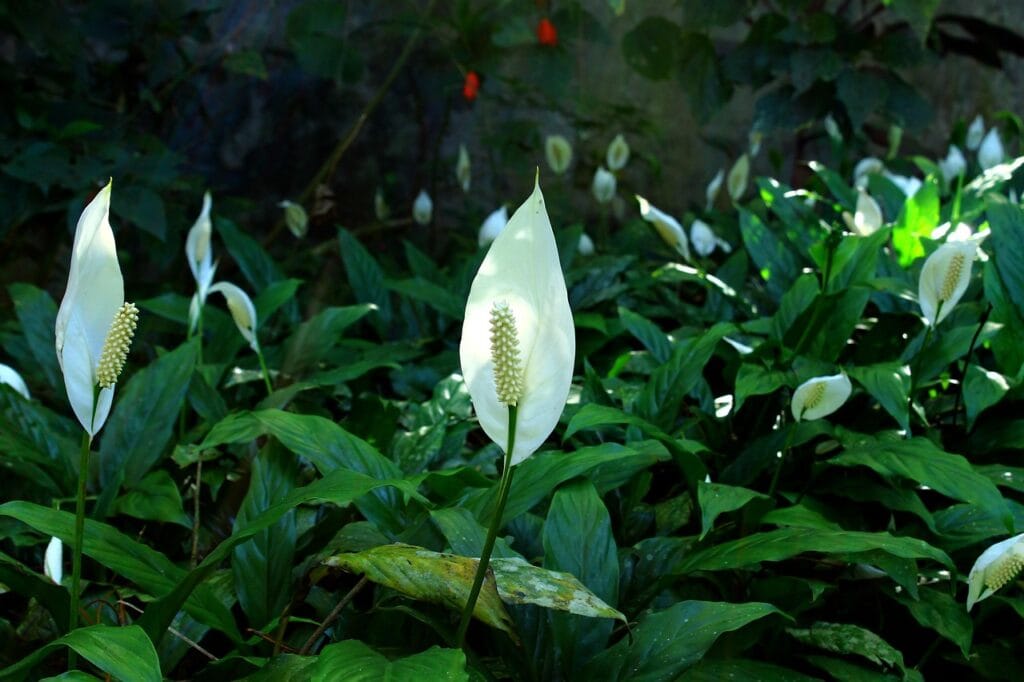
they kept peace lilies in shade of a big plant.If you can make environment like this. Then you should
The ideal outdoor location for a peace lily mimics its natural rainforest habitat, where it receives filtered light and consistent moisture. I wanted to mean that you have to make almost the same environment which it gets at nature . As peace lilies originate from the tropical rainforests of Central and South America . If you can make the environment as it’s origin then it will be perfect.
Best Locations for Outdoor Growth
- Under Large Trees: Provides dappled sunlight like tropical rain forests .
- On a Shaded Porch or Balcony: Protects from extreme weather .
- Near Fences or Walls: Shields from strong winds .
Sunlight Guidelines
- Morning Sun & Afternoon Shade: Best for growth
- Avoid Too Much Direct Sun: It causes yellow or scorched leaves
- Avoid Too Much Shade: It can lead to fewer blooms
Try to provide consistent shade with some morning sunlight . It keep your peace lily healthy outdoors.
Soil & Planting Tips for growing peace lily outdoors
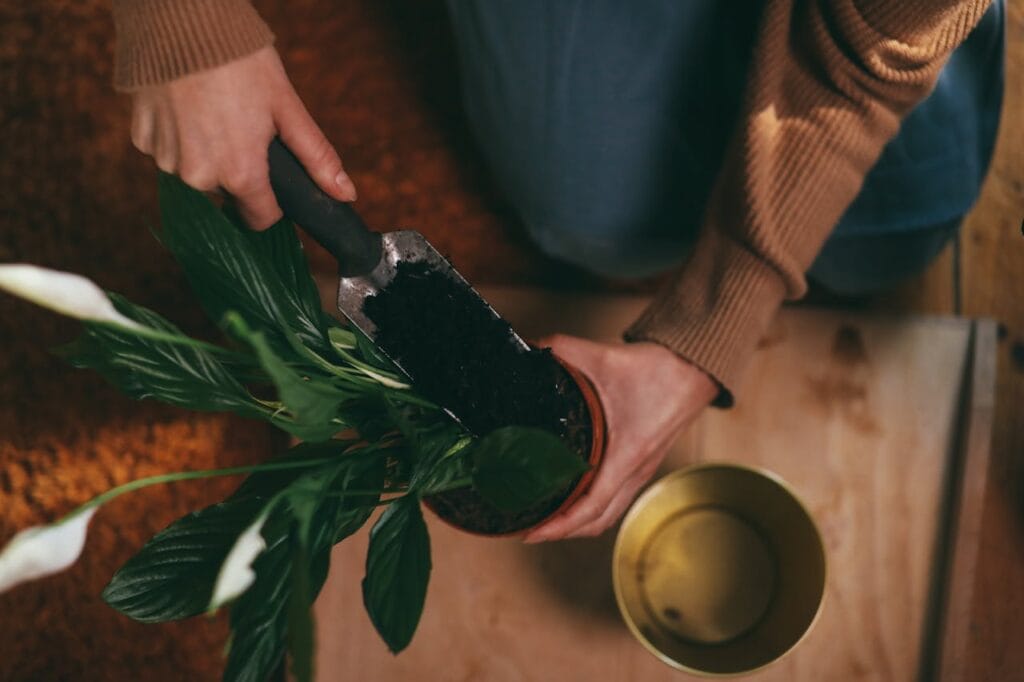
You should have proper knowledge of soil preparation for peace lily as you are going to grow a plant which need special care . So ,I had explained the things you need to know .
Best Soil Type
Peace lilies thrive in rich, well-draining soil with good moisture retention.
- Ideal pH: Slightly acidic (5.5-6.5)
- Best Mix: for making the soil mix you can use 50% potting soil, 25% compost, 25% perlite .
- Avoid: Heavy clay soil (can cause root rot)
If you are going to plant this in container this guide will help you-
Planting peace lily in the Ground or Containers
Ground Planting
- Choose a well-drained area with good organic matter
- Dig a hole twice the size of the root ball
- Add compost to enrich the soil before planting
Container Planting
- Use a pot with drainage holes
- Select a 12-inch (30 cm) pot or larger
- Ensure soil remains consistently moist but not soggy
I will suggest you to plant in a container. As if in your area in the temperature falls under 18 ° Celsius then you have to bring the plant in your home.
Tip: Proper soil and planting techniques help peace lilies establish strong roots outdoors.
Watering & Humidity Control
While peace lilies love moisture, but improper watering can cause stress.

How Often to Water?
- Warm Months: 2-3 times per week
- Cooler Months: Once per week
Tip – only water when top 1 inch (2.5 cm) feels dry as it sometimes can be dried up faster than you think so check every day.
Humidity Requirements
Peace lilies require 50-70% humidity outdoors.
- Increase Humidity:
- Place near water features (ponds, fountains)
- Use mulch to retain soil moisture
- Group with other tropical plants
Proper watering and humidity control prevent drying out and leaf wilting.
Fertilization and Growth Boosting
Here are many types of fertilizer like liquid fertilizer, slow release fertilizer and also organic fertilizers ect. So, I have listed them & how to use them and their benefits .
Liquid fertilizer
For peace lilies, apply liquid fertilizer every 4–6 weeks during the growing season (spring and summer). Reduce feeding in fall and winter when growth slows down.
How to use liquid fertilizer for peace lilies outdoor growth
- Dilute to half-strength to prevent over-fertilization.
- Apply after watering to avoid root burn.
- Use a balanced fertilizer (e.g., 10-10-10 or 20-20-20).
- Skip fertilizing in winter unless the plant is actively growing indoors.
Slow-Release Fertilizer
It provides steady nutrients over time.Less maintenance—only apply every 2–3 months instead of every few weeks.Works well with liquid fertilizer for a balanced feeding plan.
How to Use Slow-Release Fertilizer for Peace Lilies:
- 1. Choose a balanced formula like 10-10-10 or 14-14-14.
- 2. Apply every 2–3 months during spring and summer.
- 3. Sprinkle it around the base and lightly mix it into the topsoil.
- 4. Water after applying to help nutrients release
This way, your peace lily gets a constant nutrient supply while you use liquid fertilizer for quick boosts when needed.
Organic Fertilizer
Organic fertilizers improve soil health naturally, providing essential nutrients while enhancing microbial activity. They are a great eco-friendly alternative for peace lily care outdoors and help sustain long-term plant health.
How to Use Organic Fertilizer for Peace Lilies:
- Compost or Aged Manure – Apply a thin layer around the base every 2–3 months to enrich the soil.
- Worm Castings – Mix a small amount into the topsoil every 2 months for slow nutrient release.
- Banana Peel Fertilizer – Chop banana peels and bury them near the roots every 4–6 weeks for a natural potassium boost.
- Homemade Organic Liquid Fertilizer – Use compost tea or fish emulsion every 4–6 weeks for a quick nutrient supply.
Resources – Learn how to make organic fertilizer from kitchen waste
Other Fertilizers for Peace Lilies
Besides liquid, slow-release, and organic fertilizers, here are some other beneficial options:
Epsom Salt (Magnesium Boost)
- Helps keep leaves deep green and prevents yellowing.
- Apply 1 tbsp per gallon of water every 2 months.
Coffee Grounds (Mild Acidic Fertilizer)
- Enhances soil acidity slightly, which peace lilies prefer.
- Sprinkle lightly around the base every 6–8 weeks to avoid over-acidification.
Using a mix of liquid, slow-release, and organic fertilizers ensures steady growth, healthy foliage, and frequent blooms while keeping the soil naturally enriched.
Tip – Avoid over-fertilizing, as it can cause brown leaf tips.
Common Pests & Diseases of peace lily
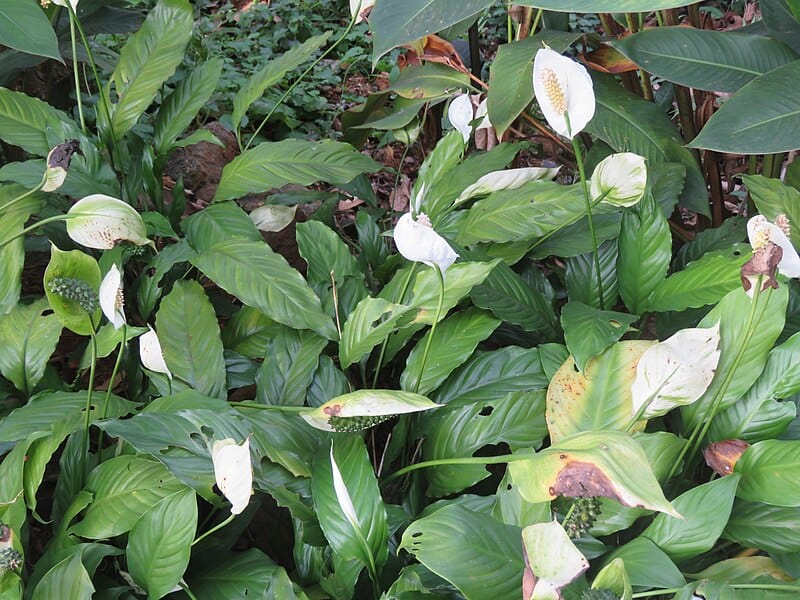
Outdoor peace lilies are exposed to pests and fungal infections.
Common Pests
Hare’s the list of common pests we can found in peace lily plants .
- Aphids: Suck sap, causing leaf curling
- Spider Mites: Tiny webs, yellow speckling
- Mealybugs: White, cotton-like clumps
Natural Remedies for pest control in peace lilies:
- Neem oil spray (every 2 weeks)
- Insecticidal soap for infestations
- Hand-remove pests with a damp cloth
Disease Prevention
- Root Rot: Avoid overwatering, ensure proper drainage
- Leaf Spot: Caused by fungal infection; remove affected leaves
- Mildew: Increase air circulation, avoid wetting leaves
A healthy environment reduces pest and disease risks naturally.
Seasonal Care & Winter Protection
Every season is unique. So, in different seasons you have to change the care routine for your peace lilies. As in summer here is hot. So, you have to water more and in spring also the same thing but in fall and winter you should reduce the watering. A chart for you below ,
Spring & Summer
- Increase watering & fertilization
- Watch for pests & yellowing leaves
Fall & Winter
- Reduce watering (growth slows)
- Move indoors if temps drop below 55°F (12.7°C)
- Mulch outdoor plants for insulation
Tip – Protecting peace lilies in cold seasons prevents damage and promotes longevity.
Troubleshooting Common Issues
Problems can always happen with every plant . It is not a huge due but you have to prepare yourself for recovering your plans from those problems , so here I have listed some common problems and their trouble shooting guide below .
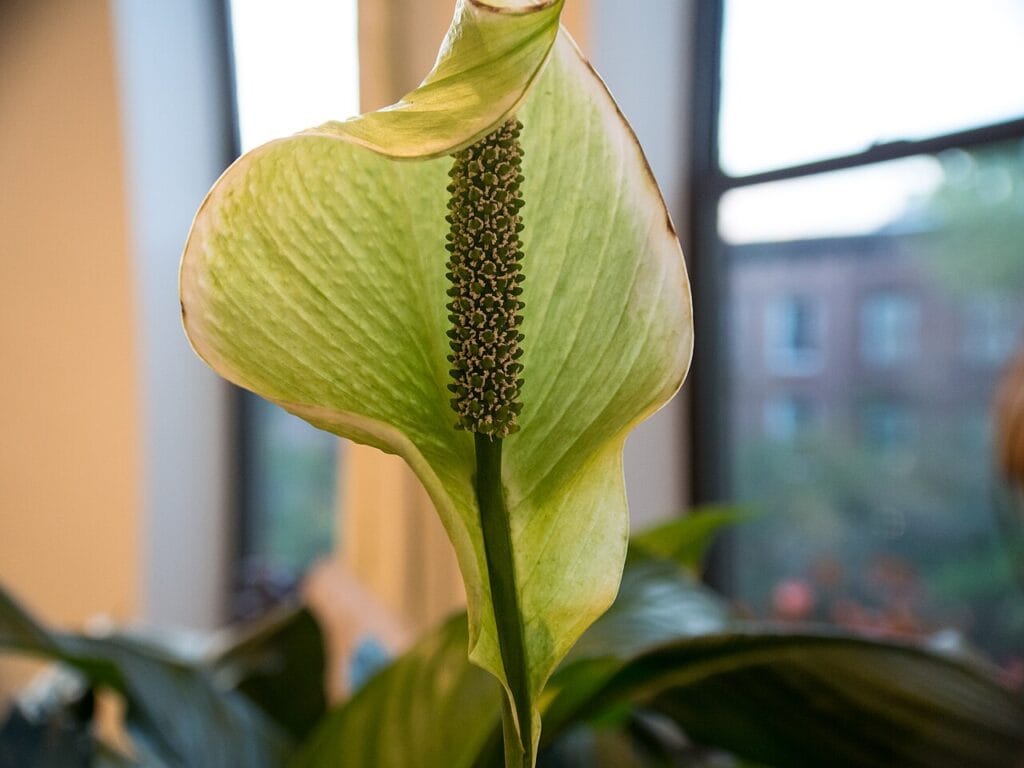
Why Are My Peace Lily Leaves Turning Yellow?
- Overwatering: Check for soggy soil . At first I thought that as peace Lily from a tropical rainforest area then too much water won’t damage this plants. But I proved wrong and my plants got damaged so you don’t have to do the same thing like me.
- Too Much Sun: Move to a shadier spot
Why Is My Peace Lily Wilting?
- Underwatering: Increase watering
- Root Rot: Ensure proper drainage
Why Isn’t My Peace Lily Blooming?
- Not Enough Light: Move to brighter shade
- Too Much Fertilizer: Reduce feeding
Quick adjustments restore peace lily health efficiently.
Some FAQs
Can peace lilies tolerate direct sunlight outdoors?
Peace lilies prefer indirect light, even outdoors. Direct sunlight can scorch their leaves and cause browning. For best results, place your peace lily in a partially shaded area or somewhere that receives filtered light throughout the day.
What is the ideal temperature for growing peace lilies outdoors?
Peace lilies thrive in temperatures between 65°F to 80°F (18°C to 27°C). They are sensitive to extreme cold or hot conditions. Ensure they are kept away from cold drafts or hot direct sunlight during the hottest parts of the day.
Why are the leaves of my peace lily turning yellow outdoors?
Yellowing leaves can be caused by several factors:
Overwatering or underwatering. Make sure you have a consistent watering schedule.
Nutrient deficiency, especially nitrogen. You may need to apply a balanced fertilizer.
Pests like aphids or mealybugs. Check for signs of pests and treat accordingly.
Is it okay to prune my peace lily outdoors?
Yes, regular pruning is important for peace lilies to maintain their shape and health. Remove any dead or yellowing leaves by cutting them at the base. You can also trim spent blooms to encourage new flowering.
Can peace lilies be grown outdoors year-round?
Peace lilies are tropical plants and may not survive in cold climates during winter. In regions with cold winters, it’s best to bring the plant indoors or move it to a sheltered area during the colder months. In warmer climates, peace lilies can be grown outdoors year-round.
Conclusion
Growing peace lilies outdoors is possible with the right conditions. These tropical plants need warm temperatures, shade, moist soil, and high humidity to thrive. Whether planted in the ground or in pots, they make stunning additions to outdoor spaces.
By following proper watering, fertilization, pest control, and seasonal care, you can enjoy lush green foliage and elegant white blooms year-round.
If you live in a colder region, consider growing peace lilies in containers for easy indoor transition during winter. With patience and care, these resilient plants will flourish in outdoor settings, providing beauty and tranquility to your garden.








